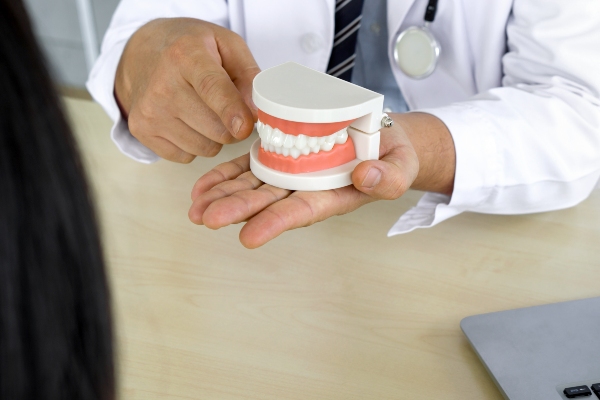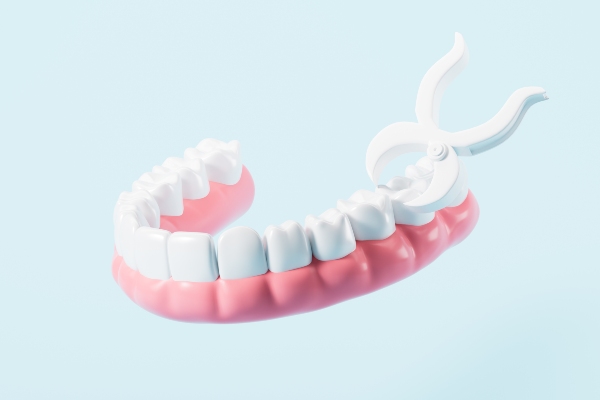Dental Bonding: A Simple Solution for Repairing and Enhancing Your Smile

Dental bonding is a versatile and minimally invasive cosmetic procedure that can address various dental imperfections. This procedure, involving the application of a tooth-colored resin to restore or enhance teeth, offers patients a simple and cost-effective solution for achieving a brighter, more uniform smile. Dental bonding is ideal for repairing minor dental flaws without extensive procedures. It is important to learn the benefits, uses, and processes of dental bonding to determine whether it may be an ideal solution for your smile.
What is dental bonding?
Dental bonding is a cosmetic procedure in which a dentist applies tooth-colored composite resin to the teeth. This resin is molded, shaped, and then hardened to improve the tooth's appearance. Dental bonding can enhance a tooth's shape, color, and size, making it an excellent choice for minor cosmetic improvements and repairs. Unlike other cosmetic options, such as veneers or crowns, dental bonding is a relatively quick and painless procedure that can often be completed in a single visit.
Common reasons for dental bonding
Dental bonding can address a variety of dental issues, making it one of the most versatile cosmetic options available. Some of the most common reasons patients consider dental bonding include:
- Repairing Chipped or Cracked Teeth: Minor chips or cracks can disrupt a tooth's appearance and functionality. Dental bonding provides an effective solution to cover and strengthen these areas, restoring a tooth’s natural look and durability.
- Improving Discolored Teeth: Dental bonding can improve stained or discolored teeth. The composite resin can be color-matched to the surrounding teeth, effectively masking discoloration and creating a uniform appearance.
- Closing Gaps Between Teeth: Gaps or spaces between teeth, especially in the front, can detract from a balanced smile. Dental bonding can fill these gaps, creating a more even alignment without the need for orthodontics.
- Lengthening Short Teeth: Some individuals have teeth that are naturally shorter or have been worn down over time. Dental bonding can add length to these teeth, helping create a proportional and aesthetically pleasing smile.
- Altering the Shape of Teeth: Dental bonding can reshape uneven, irregularly shaped, or jagged teeth. By adding resin to specific areas, a dentist can create a smoother, more symmetrical appearance.
Benefits of dental bonding
Dental bonding offers several advantages over other cosmetic and restorative procedures. For many patients, these benefits make it an attractive option for improving their smile. The key benefits include:
- Affordability: Dental bonding is generally more affordable than cosmetic treatments such as veneers or crowns. Bonding is an excellent choice for individuals on a budget or those looking for minor aesthetic enhancements.
- Minimally Invasive: Unlike veneers, which require removing a portion of enamel, dental bonding typically involves minimal or no enamel removal. This means that bonding is less invasive and preserves more of the natural tooth structure.
- Quick and Convenient: Dental bonding is often completed in a single appointment, depending on the extent of the work. For patients with busy schedules, bonding provides a time-efficient solution for cosmetic improvements.
- Natural-Looking Results: Composite resin is available in various shades, allowing dentists to precisely match the color of the bonding material to your natural teeth. This ensures a seamless, natural appearance that blends in with surrounding teeth.
The dental bonding process
The dental bonding procedure is straightforward and typically completed in just one visit. Here is what patients can expect during the process:
Step 1: Preparation
Dental bonding usually requires little to no preparation. Anesthesia is often unnecessary unless the bonding intends to fill a decayed tooth. The dentist will select a shade of composite resin that matches your teeth, ensuring a natural appearance.
Step 2: Application
The dentist will roughen the tooth's surface to help the bonding material adhere. A conditioning liquid will then be applied to further facilitate bonding.
Step 3: Resin Application
The dentist applies the composite resin, molding and shaping it to achieve the desired look. The resin is applied in layers, allowing for optimal shaping and coverage.
Step 4: Curing and Finishing
Once the resin is shaped, a special light hardens the material. After the bonding material has set, the dentist trims, shapes, and polishes it to match the surrounding teeth.
Try dental bonding today
Dental bonding offers a simple yet effective solution for repairing and enhancing your smile. From fixing minor chips to filling gaps and improving discoloration, this procedure provides a quick and affordable option for those seeking a brighter, more attractive smile. If you are considering dental bonding, consult a dentist to determine if this treatment meets your aesthetic and functional goals. With proper care, dental bonding can help you enjoy a confident smile for years to come. For more information, schedule a consultation visit today at Hemet Dental Center: Brian Stiewel DDS, INC..
Request an appointment here: https://hemetdentalcenter.com or call Hemet Dental Center: Brian Stiewel DDS, INC. at (951) 707-4366 for an appointment in our Hemet office.
Check out what others are saying about our dental services on Yelp: Dental Bonding in Hemet, CA.
Recent Posts
Dental bonding is a versatile and effective cosmetic dental procedure that addresses a range of aesthetic and functional concerns. By using a tooth-colored resin material, dental bonding can enhance the appearance of teeth, repair minor damage, and restore confidence in a smile. Identifying the signs that indicate a patient may benefit from dental bonding helps…
Dental bonding is one of the most versatile and minimally invasive restorative and cosmetic dental procedures. Dental bonding is the go-to procedure for many patients looking to fix imperfections or enhance their smile, from enhancing the appearance and shape of teeth to repairing damaged enamel. Whether you are new to cosmetic dentistry or considering touch-ups…
If you are looking to make improvements to your smile, you may want to consider dental bonding. This cosmetic dentistry procedure uses a composite resin material to make repairs to teeth and enhance the appearance of a person's smile. Bonding can be used to correct various cosmetic issues, including chips, gaps, discoloration, and even misshapen…
Dental bonding is a great way to repair cosmetic damage in your teeth. Imperfections in your teeth can leave you feeling self-conscious and unconfident which can have an impact on your quality of life. This simple procedure can help you by restoring a smile you can be proud of. Let's take a closer look at…


